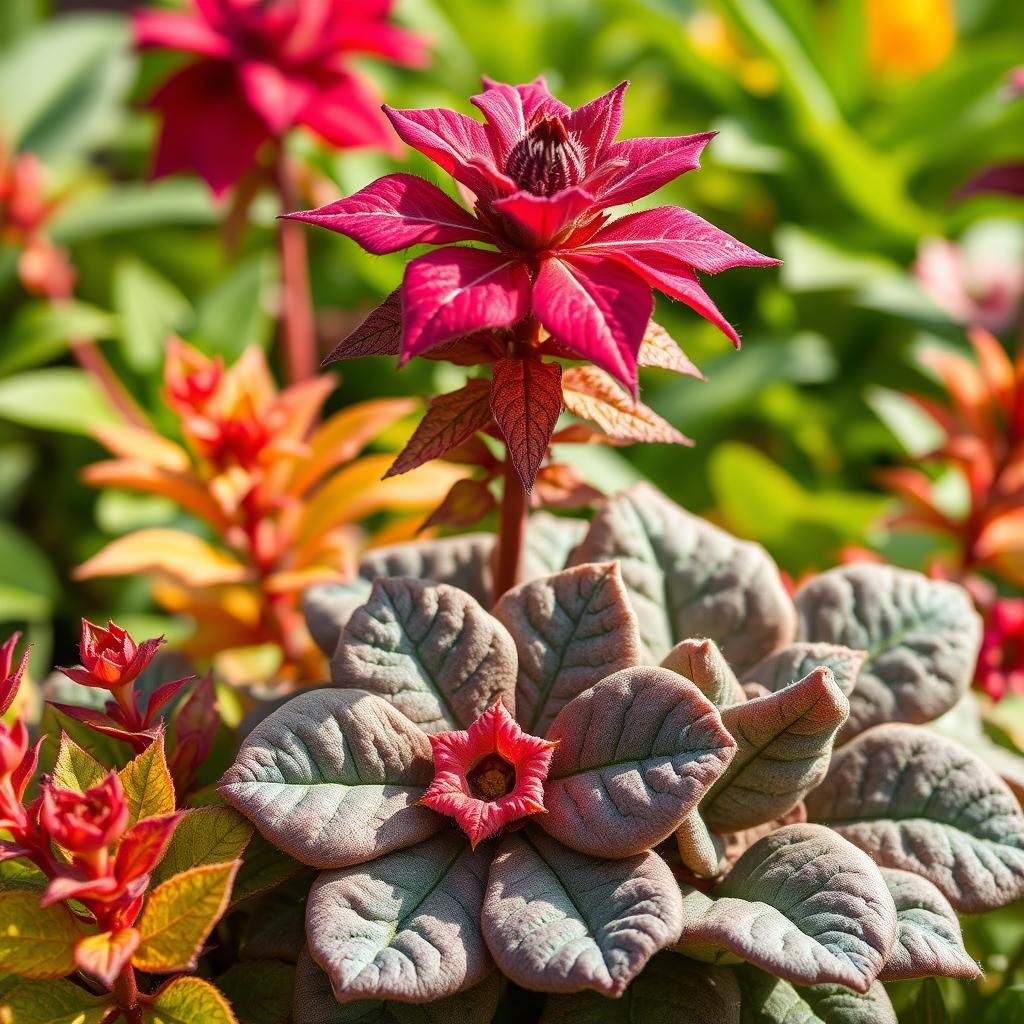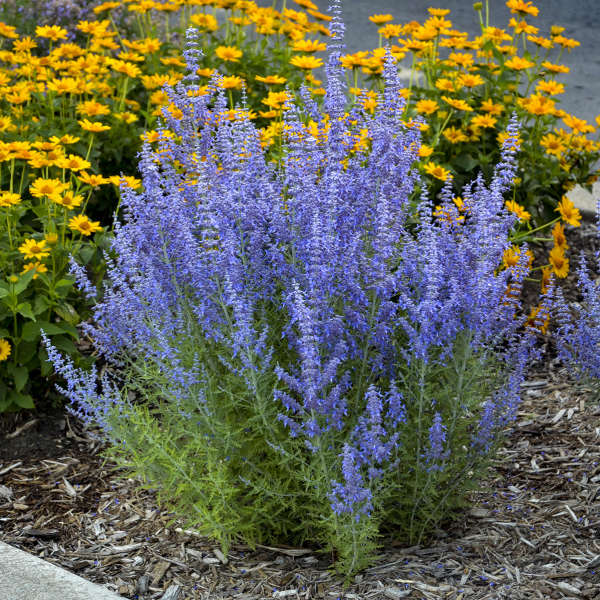Top 10 Plants That Withstand High Heat for Your Garden

When it comes to gardening in hot climates, selecting the right plants can make all the difference. With soaring temperatures, traditional garden favorites may struggle to survive, leaving gardeners in search of resilient alternatives. This article explores the top 10 plants that thrive in high heat, ensuring a vibrant and sustainable garden even during the hottest months. From drought-resistant succulents to colorful blooming perennials, these heat-tolerant options not only endure extreme weather conditions but also enhance the beauty of your outdoor space. Discover how to create a stunning garden that withstands the challenges of summer heat while requiring minimal maintenance.
Plants That Withstand High Heat
Certain plants have evolved impressive adaptations that allow them to thrive in extremely hot environments. These plants often possess features such as thick, waxy leaves or deep root systems that help them conserve water and resist desiccation. Examples include succulents, cacti, and certain native grasses that can tolerate prolonged periods of drought while still maintaining their health and beauty. With increasing temperatures and changing climates, selecting heat-tolerant plants for landscaping or gardening can be crucial for sustainability and aesthetic appeal.
Types of Heat-Resistant Plants
When considering plants that can withstand high heat, it is essential to recognize the various types available. Succulents, such as agave and aloe, store water in their tissues, making them well-suited for arid environments. Cacti, with their spiny exteriors and ability to absorb moisture quickly, are another excellent choice for hot climates. Additionally, certain native grasses like buffalo grass and blue grama are adapted to survive in high temperatures and low water conditions, ensuring they remain vibrant and green even in the hottest months.
Benefits of Using Heat-Tolerant Plants
Incorporating heat-tolerant plants into your garden or landscaping offers numerous benefits. These plants typically require less water, which not only conserves this precious resource but also reduces maintenance efforts for garden care. Furthermore, heat-resistant plants can help mitigate the urban heat island effect by lowering temperature around surroundings, making urban areas more comfortable during hot weather. Additionally, their natural resilience can lead to healthier ecosystems, as they attract local wildlife and support biodiversity.
Choosing the Right Plants for Your Climate
Selecting the right heat-tolerant plants for your specific climate involves understanding the local environmental conditions. Factors such as soil type, humidity, and sunlight exposure play a crucial role in what species will thrive. Conducting research on the native flora of your region can provide valuable insights into which plants are best suited for high heat. It's also wise to consider historical climate data, as increasingly severe weather patterns may influence your choices in plant selection and landscape planning.
Maintenance of Heat-Resistant Plants
While heat-resistant plants are generally low-maintenance, they still require some level of care to ensure optimal growth. Regular mulching can help retain soil moisture and regulate temperature, while appropriate watering practices during the establishment phase are crucial. Understanding specific watering needs based on the type of plant can prevent issues such as root rot or excessive desiccation. Over time, observing how the plants respond to the local conditions can guide further care measures.
Examples of Popular Heat-Tolerant Plants
Some popular choices among gardeners and landscapers for high-heat areas include lavender, rosemary, and marigolds. Lavender not only withstands high temperatures but also provides aromatic foliage and attracts pollinators. Rosemary is another hardy herb that thrives in hot, dry climates, offering both culinary and ornamental value. Marigolds, known for their vibrant colors, can add beauty to any garden while being able to withstand blazing sun. These examples highlight the beauty and versatility of heat-tolerant plants.
| Plant Type | Characteristics | Watering Needs |
|---|---|---|
| Succulent | Water-storing tissues, thick leaves | Low |
| Cactus | Spiny exterior, quick moisture absorption | Very Low |
| Native Grasses | Drought-resistant, adaptive to local climates | Moderate |
| Lavender | Aromatic, attracts pollinators | Low |
| Rosemary | Hardy herb, culinary use | Low |
What grows in 100 degree heat?

In regions where temperatures can soar to 100 degrees Fahrenheit, certain plants and crops thrive despite the harsh conditions. These plants are typically adapted to extreme heat and dry conditions, allowing them to conserve water and withstand intense sunlight. Here are some examples of what can grow in such environments.
1. Cacti
Cacti are well-known for their ability to survive in extremely hot and arid conditions. They have adapted several features that enable them to thrive at high temperatures:
See also:
- Water Storage: Cacti store water in their stems, allowing them to survive long periods without rainfall.
- Thick Skin: Their thick, waxy skin minimizes water loss by reducing evaporation.
- Spines: Instead of leaves, cacti have spines that not only provide shade but also deter animals from consuming them.
2. Agave
Agave plants are succulent species known for their resilience in hot climates. These plants are used to make tequila and have several adaptations:
- Deep Roots: Agave has deep root systems that allow them to access water from underground sources.
- Fleshy Leaves: Their fleshy leaves store water and nutrients, helping them survive dry spells.
- Heat Tolerance: Agave plants are naturally adapted to tolerate high temperatures, making them ideal for arid environments.
3. Desert Wildflowers
Many species of wildflowers have evolved to thrive in hot desert climates. These flowers have developed unique survival strategies:
- Short Life Cycles: Many desert wildflowers complete their life cycle quickly, blooming and producing seeds before the extreme heat sets in.
- Drought Resilience: These species can survive long periods of drought and can go dormant until conditions become favorable.
- Bright Colors: Their bright colors attract pollinators even under high temperatures, ensuring successful reproduction.
4. Peppers
Certain types of hot peppers, such as jalapeños and habaneros, thrive in hot climates. These plants have specific characteristics that enable them to flourish:
- Heat Adaptation: Peppers often prefer well-drained soil and can tolerate high temperatures, requiring minimal moisture.
- Sun Requirement: They thrive in full sun, which boosts their growth and fruit production.
- Pest Resistance: The spicy compounds in peppers can deter certain pests, allowing for better growth in challenging conditions.
5. Okra
Okra is a popular crop in many hot climates and is known for its ability to withstand high temperatures. Its distinct characteristics include:
- Heat Tolerance: Okra grows well in temperatures up to 100 degrees, making it a staple in southern U.S. gardens.
- Deep Roots: Its root system can access water deep in the soil, allowing it to thrive during dry conditions.
- Nutrient Needs: Okra benefits from nutrient-rich soil and can withstand challenging environmental conditions while still producing abundant fruit.
What potted plant is best for extreme heat?
:max_bytes(150000):strip_icc()/27625_FernswithCarmen__107w_preview-00e0c0a736b54d76b8a4742e27089e32.jpg)
The best potted plants for extreme heat are those that are particularly resilient and adapted to survive in harsh, sunny conditions. Here are some of the top choices:
1. Agave
Agave plants are succulents known for their striking rosette shape and architectural foliage. They thrive in hot, dry climates and require minimal water. Their thick, fleshy leaves store moisture, making them ideal for hot environments.
- Very low maintenance and requires little watering
- Can tolerate poor soil conditions
- Provides a dramatic focal point in any garden
2. Bougainvillea
This vibrant flowering plant is a perfect option for extreme heat. Bougainvillea displays bold, colorful bracts that can withstand intense sunlight and dry conditions, making it a wonderfully decorative plant for patios and balconies.
- Thrives in full sun exposure
- Can tolerate drought once established
- Colors include purple, pink, orange, and red, enhancing visual appeal
3. Cacti
Cacti are the quintessential heat-loving plants. They store water in their thick tissues and have adaptations that minimize water loss, allowing them to thrive in hot, arid environments.
- Extremely low water requirements
- Available in various shapes and sizes, perfect for diverse aesthetics
- Often easy to propagate and care for
4. Succulents
Like cacti, succulents store water in their leaves and stems, enabling them to endure extreme conditions. There are many varieties of succulents, each with unique shapes and colors, adding variety to your potted plant collection.

- Wide variety of species to choose from
- Requires minimal upkeep and watering
- Often has colorful and interesting leaf patterns
5. Oleander
Oleander is a tough shrub that can withstand extreme temperatures and is often seen in warmer climates. Its beautiful flowers and sturdy nature make it a popular choice for patio pots.
- Highly drought-tolerant and resistant to heat stress
- Flowers can be found in various colors including white, pink, and yellow
- Serves as a natural privacy screen due to its dense growth habit
What plants are drought and heat tolerant?

Drought and heat-tolerant plants are essential for sustainable gardening and landscaping, especially in areas prone to dry and warm conditions. These plants have adapted to survive with minimal water and can withstand high temperatures, making them ideal choices for xeriscaping and low-maintenance gardens. Here are some notable examples of such plants.
1. Succulents
Succulents are perhaps the most recognized group of drought-tolerant plants. They store water in their leaves, stems, or roots, allowing them to survive long dry spells. In addition to their water storage abilities, succulents often have a waxy coating that reduces moisture loss.
- Aloe Vera: Known for its medicinal properties, Aloe Vera thrives in hot, arid conditions.
- Agave: This plant can survive in extremely dry environments and comes in various shapes and sizes.
- Jade Plant: Popular as a houseplant, the Jade Plant also does well in outdoor gardens under sunny conditions.
2. Ornamental Grasses
Ornamental grasses are versatile landscaping plants that are naturally resistant to drought. They are excellent for adding texture and movement to gardens, and their deep root systems help them access moisture during dry spells.
- Blue Fescue: This low-maintenance grass has a striking blue hue and can flourish in poor soil.
- Prairie Dropseed: Known for its fine texture, it works well in native and drought-tolerant landscapes.
- Japanese Blood Grass: This grass offers an interesting red tint and thrives in heat without much water.
3. Mediterranean Herbs
Many herbs native to the Mediterranean region are highly adaptable to dry and hot climates. Their natural resilience makes them useful not only for culinary purposes but also as ornamental plants that can thrive in difficult conditions.
- Lavender: Known for its fragrance and beautiful purple flowers, lavender thrives in hot, dry conditions.
- Thyme: A versatile culinary herb that is drought-tolerant and adds a lovely green carpet to gardens.
- Rosemary: This hardy shrub requires well-drained soil and is a great addition to sunny, dry spots.
4. Flowering Perennials
Certain flowering perennials can endure heat and drought, making them ideal for garden beds and borders. These plants provide color and interest without the need for constant watering.
- Black-eyed Susan: This cheerful flower is both drought-tolerant and attracts pollinators.
- Daylily: Known for its vibrant blooms, the daylily can thrive in less-than-ideal soil conditions.
- Coneflower: This hardy perennial is perfect for sunny spots and can handle drought conditions very well.
5. Cacti
Cacti are synonymous with drought tolerance and are designed for survival in some of the most arid climates. These unique plants have evolved to store water and minimize evaporation, making them excellent choices for xeriscaping.
- Saguaro Cactus: Iconic to the deserts of the Southwest, this cactus can store large amounts of water.
- Barrel Cactus: Round and ribbed, this cactus is exceptionally drought-resistant and adds architectural interest.
- Prickly Pear Cactus: This type of cactus produces edible pads and fruits, providing both aesthetic and culinary benefits.
Questions from Our Readers
What are some examples of plants that withstand high heat?
Many plants are resilient to high temperatures, including succulents, agave, cacti, and lavender. These plants have developed adaptive features such as thick leaves or waxy surfaces that help them retain moisture and survive in arid climates.
How can I care for heat-resistant plants in my garden?
To care for heat-resistant plants, ensure they are planted in well-drained soil and receive adequate sunlight without being scorched. Regular watering during extreme heat is essential, but be cautious not to overwater, as this can lead to root rot.
See also:
Are heat-resistant plants suitable for containers?
Yes, many heat-resistant plants thrive in containers, provided that the pots have proper drainage and are made of materials that help keep the soil temperature stable. Make sure to choose drought-tolerant varieties that can handle the heat and do well in confined spaces.
What benefits do heat-resistant plants provide in landscaping?
Heat-resistant plants offer numerous benefits in landscaping, including reduced water usage, lower maintenance needs, and the ability to thrive in challenging conditions. These plants can create a vibrant and sustainable landscape that requires less care while providing aesthetic appeal.

If you want to read more articles like Top 10 Plants That Withstand High Heat for Your Garden, we recommend you check out our Landscaping category.
Leave a Reply
Related Articles